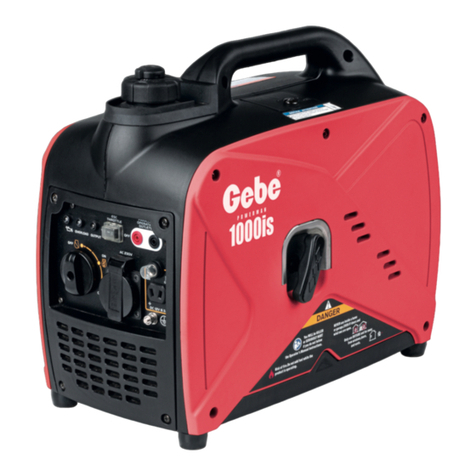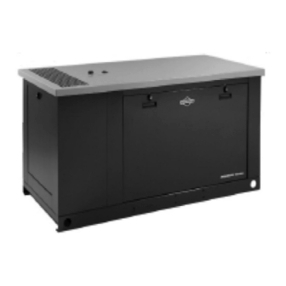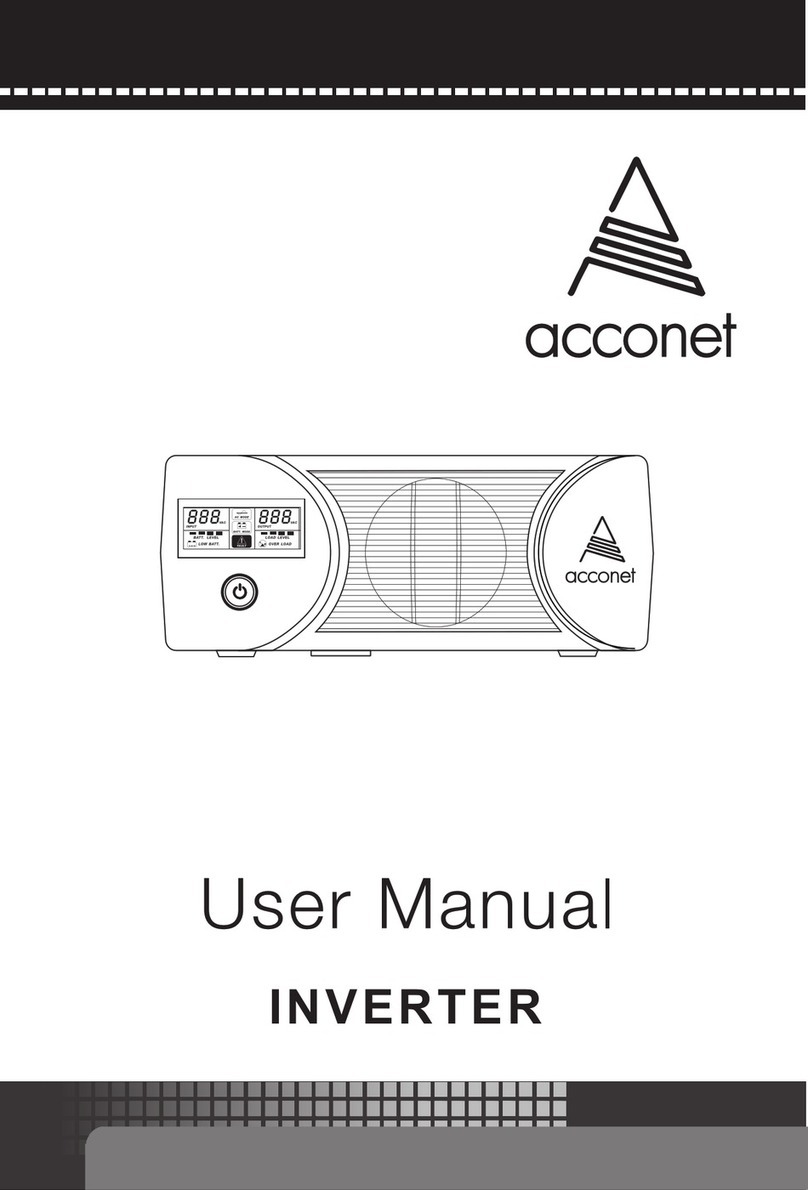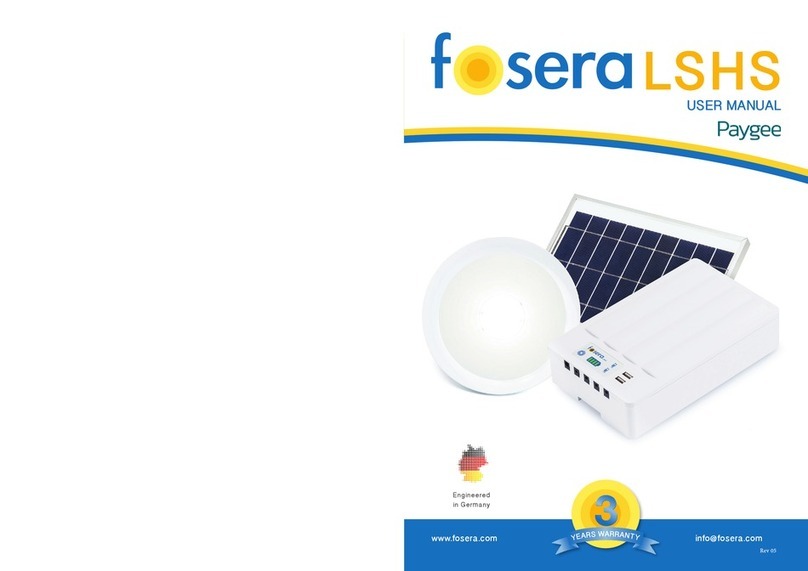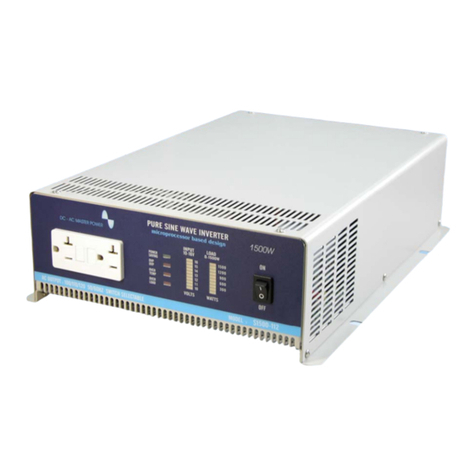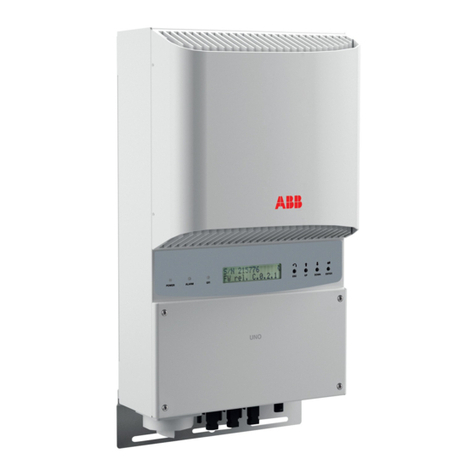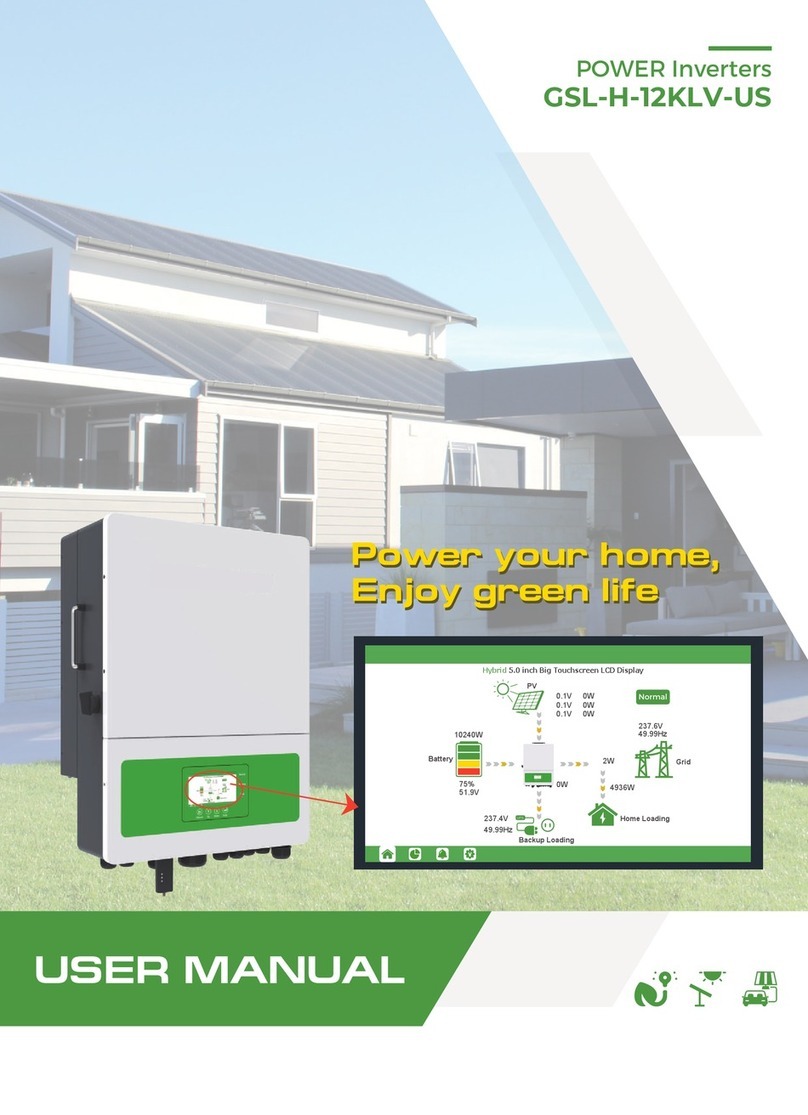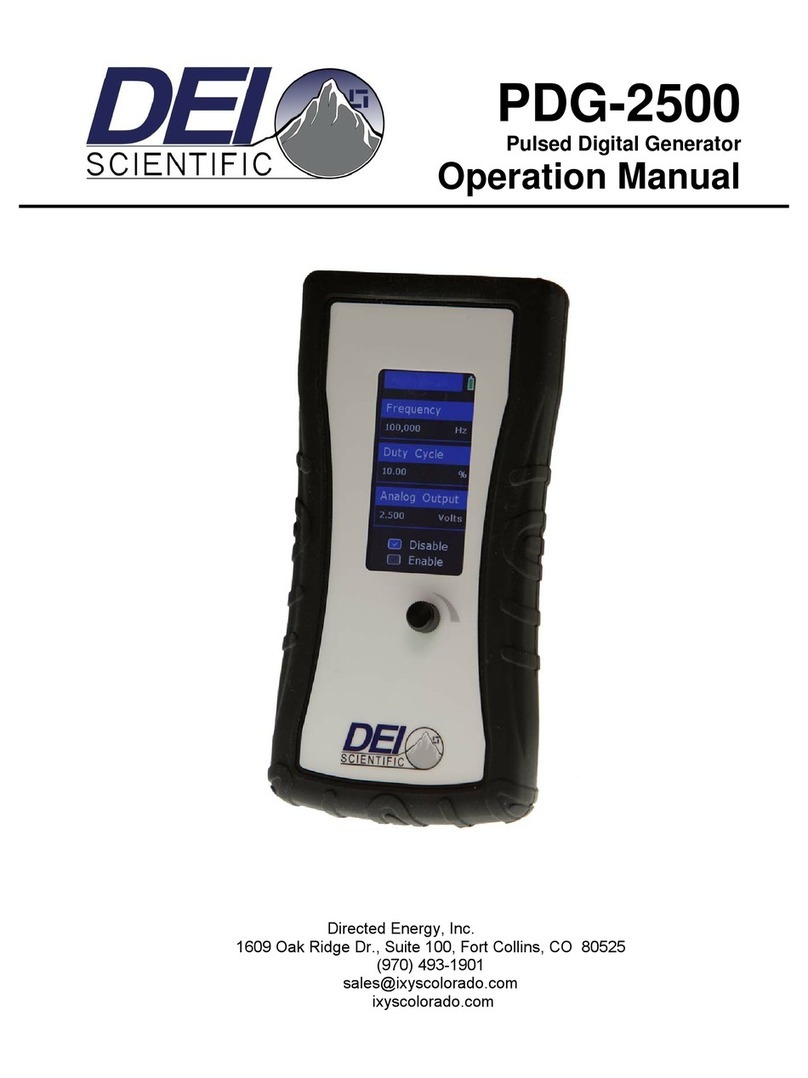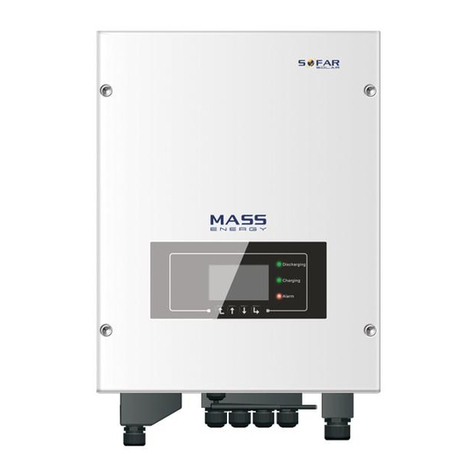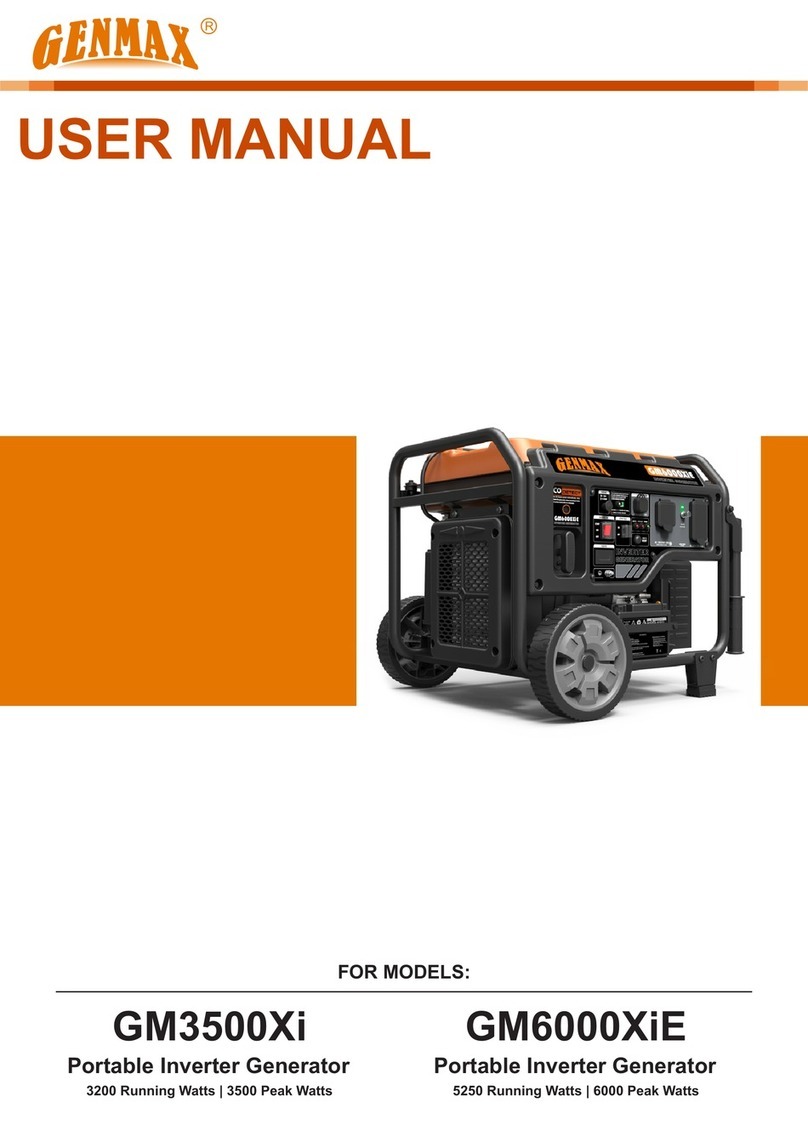GenixGreen ES-BOX1 User manual

ES-BOX1 (5120WH)
3.2KVA INVERTER
5KWH LFP BATTERY
ALL-IN-ONE SOLAR ESS
USER MANUAL

- 1 -
CONTENT
1. ABOUT THIS MANUAL................................................................................................................
1.1 CATALOG................................................................................................................................
1.2 SCOPE......................................................................................................................................
1.3 SAFETY DESCRIPTIONS .....................................................................................................
2. INTRODUCTION...........................................................................................................................
2.1 FUNCTION...............................................................................................................................
2.2 BASIC SYSTEM STRUCTURE............................................................................................
3. WIFI CONNECTIVITY
4. INSTALLATION..............................................................................................................................
4.1 UNPACKING AND INSPECTION........................................................................................
4.2 PREPARE................................................................................................................................
4.3 INSTALL UNIT.........................................................................................................................
4.4 AC INPUT/OUTPUT CONNECTION...................................................................................
4.5 PV CONNECTION.................................................................................................................
4.6 FINAL ASSEMBLY.................................................................................................................
5. OPERATION...................................................................................................................................
5.1 POWER SWITCH...................................................................................................................
5.2 OPERATION AND DISPLAY PANEL..................................................................................
5.3 LCD DISPLAY ICONS............................................................................................................
5.4 LCD SETTING........................................................................................................................
5.5 FAULT REFERENCE CODE................................................................................................
5.6 WARNING INDICATOR.........................................................................................................
6. TROUBLE SHOOTING................................................................................................................
7. SPECIFICATION...........................................................................................................................
TABLE 1 SOLAR MODE SPECIFICATIONS..................................................................
TABLE 2 LINE MODE SPECIFICATIONS.......................................................................
TABLE 3 CHARGE MODE SPECIfiCATIONS.................................................................
TABLE 4 BATTERY SPECIFICATIONS............................................................................
TABLE 5 INVERTER MODE SPECIFICATIONS............................................................

- 2 -
1.
ABOUT THIS MANUAL
1.1 CATALOG
This manual describes how to assemble, install, operate the units and how to troubleshoot of
this unit. Please read this manual carefully before installation and operation. Keep this manual
for future reference.
1.2 SCOPE
This manual provides safety guidelines of installation, and the information on tools and wiring.
1.3 SAFETY INSTRUCTION
WARNING: This chapter contains important safety and operating instructions. Read and
keep this manual for future reference.
1.Read and follow all installation, operation, and maintenance information carefully before using
the product.
2.Do not disassemble the unit personally. Take it to a qualified service center to repair.
3.Disconnecting all power supply before any maintaining or cleaning, please noted that if you
only turn off the unit are not safe enough.
4.WARNING!!: Only qualified service persons are allowed to operate this product. If fault not
solved after following troubleshooting table, please send this system back to local dealer or
service center for maintenance.
5.WARNING: Because this system is non-isolated, only three types of PV modules are
adaptable: mono crystalline, poly crystalline with class A‐rated and CIGS modules. To avoid
any malfunction, do not connect any PV modules which likely with current leakage flow to the
system. For example, grounded PV modules may cause current leakage flow to the system.
When using CIGS modules, please be sure of NO grounding.
6.CAUTION: It’s requested to use PV junction box with surge protection. Otherwise, it may
cause damage on system.
2.
INTRODUCTION
This is a multi‐function system, combining varies function of inverter, solar charger and
battery charger, supply uninterruptible electricity energy to loads. Its easy‐accessible
comprehensive LCD touch screen display allowed user setting the varies date according
to user’s requirements, such as battery charging current, AC/solar charger priority, and
setting different input voltage based on different applications.
2.1 FEATURES
1. Hybrid solar inverter( on/off grid inverter).
2. Output power factor PF=1.0.

- 3 -
3. On‐grid with energy storage.
4. Configurable AC/Solar Charger priority via LCD setting.
5. Smart battery charger design for optimized battery performance.
6. Compatible to mains voltage or generator power.
7. Overload, over temperature, short circuit protection, fault record, history record.
8. External WIFI devices.
2.2 BASIC SYSTEM ARCHITECTURE.
The following illustration shows basic application for this system. It also includes following
devices to have a complete running system:.
Generator or AC. PV modules .
Consult with the integrator who provide you system about architectures as you request.
This inverter can supply power to all kinds of appliances in home or office, including motor
‐Type such as tube light, fan, refrigerator, air-conditioner and so on.
Figure 1 Hybrid Power System

- 4 -
2.3 Product Overview
1.Carry Handle
2.Device switch
3.Battery BMS switch
4.AC Charge Input Port
5.AC Output Port
6.PV Charge Input Port
7.Movable wheels
8.LCD operate touch display
screen
3.
WIFI Connectivity (Optional)
This system come equipped with integrated Wi-Fi capability which makes
it
very easy to integrate into
a home network. This makes
it
ideal for local monitoring via the inverter's own wireless home network
or for online monitoring platforms.

- 5 -
4.
INSTALLATION
4.1 UNPACKING AND INSPECTION
Before installation, please inspect the unit. Be sure that everything in the package is not
damaged. The following items inside of package would be received.
01.All-in-one solar system 02.User manual
4.2 PREPARATION.
Please remove the two screws on the back cover of the device before opening it.
4.3 INSTALLATION SITES SELECTION.
Consider the below points before selecting where to install:
1.Do not mount the system on the surface of flammable construction materials.
2.Mount on the surface of solid material.
3.Install this system at a visible place in order to allow the LCD display to be read at all times.
4.For proper air circulation and heat dissipate, make sure there is 20cm distance from the
two side, 50cm distance from bottom of the unit.
5.The ambient temperature should be between 0°C and 55°C to ensure optimal operation.
6. The recommended installation position is to be adhered to the wall vertically.
7. Be sure to keep other objects and surfaces as shown in the diagram to guarantee
sufficient heat dissipation and to have enough space for collecting wires.
4.4 AC INPUT/OUTPUT CONNECTION
CAUTION! Before connecting to AC input power source, please install a separate AC breaker
between system and AC input power source. This will ensure the system can be securely
disconnected during maintenance and fully protected from over current of AC input.
The recommended spec of AC breaker is 3.2KVA 32A. There are two terminal blocks with “IN”
and “OUT” markings. Please do NOT connect input and output connectors wrong.
WARNING! All wiring must be performed by a qualified personnel. It's very important for
system safety and efficient operation to use appropriate cable for AC input connection. To
reduce risk of injury, please use the proper recommended cable size as below.
Model
Gauge
Cable (mm2)
Torque Value
3.2KVA
10AWG
6
1.2 Nm
4.5 PV CONNECTION PV
CAUTION: Before connecting to PV modules, please install separately a DC circuit
breaker between system and PV modules.

- 6 -
WARNING!: It's very important for system safety and efficient operation to use
appropriate cable for PV module connection. To reduce risk of injury, please use the
proper recommended cable size as below.
Model
Gauge
Cable (mm2)
Torque Value
3.2KVA
8AWG
8
1.2 Nm
WARNING: Because this system is non-isolated, only three types of PV modules are
acceptable: single-crystalline, poly crystalline with class A‐rated and CIGS modules. To
avoid any malfunction, do not connect any PV modules with possible current leakage to
the system. For example, grounded PV modules will cause current leakage to the system.
When using CIGS modules, please be sure NO grounding.
CAUTION: It’s requested to use PV junction box with surge protection. Otherwise, it will
cause damage on system when lightning occurs on PV modules.
PV Module Selection:
When selecting proper PV modules, please be sure to consider below parameters
1.Open circuit Voltage (Voc) of PV modules not exceeds maximum PV array open circuit
voltage of system.
2.Open circuit Voltage (Voc) of PV modules should be higher than minimum battery voltage.
INVERTER MODEL
3.2KVA
Max. PV Array Open Circuit Voltage
450Vdc
PV Array MPPT Voltage Range
120Vdc~450Vdc
Application Example:
Solar Panel Spec: 250Wp
Best working voltage: 30.1Vdc
Best working current: 8.3A
Open circuit voltage(Voc): 37.7Vdc
Short circuit current(Isc): 84A
SOLAR INPUT
Qty of
Panels
Total input
Power
(Min in serial: 6 pcs, max. in
serial: 10pcs)
6pcs in serial
6pcs
1500W
8pcs in serial
8pcs
2000W
10pcs in serial
10pcs
2500W
PV Module Wire Connection
Please follow below steps to implement PV module connection:
1. Remove insulation sleeve 10 mm for positive and negative conductors.
2. Suggest to put bootlace ferrules on the end of positive and negative wires with a proper
crimping tool.
3. Fix PV wire cover to the system with supplied screws as shown in below chart.

- 7 -
4.6 FINAL ASSEMBLY
After connecting all wires, please put bottom cover back by screwing screws.
5. OPERATION
5.1 POWER ON/OFF
Once the unit has been properly installed and the batteries are connected well, simply press
On/Off switch(located on the button of the case) to turn on the unit.
5.2 OPERATION AND DISPLAY PANEL
The operation and display panel, shown in below chart, it is on the front panel of the system. It
includes three indicators, four function keys and a LCD display, indicating the operating status
and input/output power information.
1
2
3
4
13
8
12
11
10
9
1
2
3
4
5
6
7
13
8
12
11
10
9

- 8 -
1. PV input information
2. Operation information
3. CT power
4. AC/INV indicator
5. AC Input /Grid power information
6. Charging indicator
7. AC Output information
8. Fault indicator
9. About button
10. History button
11. Setting button
12. Diagram button
13. Battery information
5.3 LCD DISPLAY ICONS
Icon
Description
Product model and operation time
Operation information include fault and warning code
Input voltage, current and power information
Output voltage,current and power information

- 9 -
PV voltage ,current and power
Battery voltage and current information
Indicates the DC/AC inverter circuit is working
Parallel status
Inverter working status
Volume icon
CT Power
This button includes LCD, inverter, MPPT version, inverter model
This button includes generation, event, help
The setting button include language, working mode, input, output,
battery, charge, PV, parallel, date and time, Grid, peak valley, and
other function settings
work state diagram

- 10 -
5.4 LCD SETTING
After press function button, the unit will enter setting mode. Set password:1155
Button
Function
Illustrate
Diagra
m
Main
Display
Interface
Return to the default display screen
Set up
Language
Chinese: Chinese display
English: English Display
Working
mode
AC: (default) AC will provide power to the load as the first priority,solar
charging the battery. When solar energy is insufficient,AC and solar
energy charge the battery at the same time. When AC is unavailable it
will be powered by solar energy or batteries.
Solar: Solar energy provides power to the loads as the first priority.
When the solar energy is sufficient,the extra energy will charges the
battery. When solar energy is insufficient for load,batteries and solar
will supply power at the same time. When solar energy and batteries
are insufficient or solar energy is unavailable,AC power supply power
to the load.
Battery: Battery provides power to the loads as the first priority. AC
provides power to the loads when battery voltage drop to low-level
warning voltage or setting point,and the AC power will charge the
battery. When the battery is fully charged,battery provides power to the
load again.
Solar + AC: Solar energy provides power to the load as the first priority.
If solar energy is not sufficient to power all load,AC energy will supply
power the load at the same time

- 11 -
Set up
Input
AC Width Range: (Default) 120-280Vac
AC narrow range: 170-280Vac
Output
Output Voltage: (Default) 230Vac、220Vac 、240Vac
Output frequency: (Default)50Hz 、60Hz
Battery
Battery Type: Lithium battery
User
Bulk charging voltage:
48v mode:56.0vdc(default) setting range:48V to 60V
Floating charge voltage:48v mode:54.0vdc(default) setting
range:48V to 60V setting increase or decrease of 0.1V
Cut off vol
Low Vol Disconnect:
48v mode :44.0vdc(default)
Setting range:36v to 50v
setting increase or decrease of 0.1V.
Shutdown Vol:
48v mode :42.0vdc(default)
Setting range:36v to 50v
setting increase or decrease of 0.1V.
High Vol Reconnect:
48V model: 54.0Vdc(default) setting range :40V to 58V
setting increase or decrease of 0.1V.
NOTE: Setting voltage point to battery mode When
selecting “Solar priority” or “Battery priority” in program
Lithium
Battery
After the lithium battery pack and the inverter are
connected through the CAN port, you can view the lithium
battery BMS management information, including battery
voltage, charging current, discharging current, discharging
voltage, battery temperature.

- 12 -
Charge
current
Total Charge: (default 10A) setting range is 10A to 90A,the increment
or decrement is 10A per click.
Note: Total Charge=Solar Charging Current+Utility Charging current
AC Charge:( default 10A)setting range is 0A to 60A,the increment or
decrement is 10A per click.
Note: when the AC charging current is set to ‘0A’, if PV, battery and
Utility exist at the same time, the PV will only charge the battery and the
load is powered by utility, and the grid-tie function is not available.
PV
PV CAP:(Default 3k)According to the actual capacity of the solar
panel, users fill in and set the rang of 1kva-8kva,the increment or
decrement is 0.1k per click.
Set up
Parallel
setting
This version of the all in one solar system does not support grid
connection.
Date &
Time
setting
You can set the local date and time in your country.
Grid
Select “On Grid” in Grid setting: when in On Grid mode solar will power
loads first, then extra power feed back to utility; When Solar power is
not enough, the utility will assist it to power loads.
Note: if the utility charging is selected to be”0A”,the grid connection
function will not be available.
Peak and
Valley
No charge1: optional
No charge2: optional
NOTE: when peak valley no charging, utility will stop charging. If pv,
battery and utility exist at the same time, the PV will only charge the
battery and the load is powered by utility and the grid-tie function is not
available
Other
Beep: Optional buzzer sound
Factory: Optional factory reset
CT sensor: CT power calibration, set the range of 500-3000,the
increment or decrement is 1 per click.
Choose the AC+PV mode first, then choose the“Out Side CT”(in
output side, when your loads power is big, PV will give more power to
supplement it, but the biggest power it can supplied is PV output rate
power)
Please note: The direction of the CT must be right. (CT is connected in
input side)
History
Generation
Generated energy diagram display for per Day/Month/Year
Event
History record for faulty date or others
Help
Some solutions to failures and warnings
About
Version
data
Version data display for LCD/inverter control board/MPPT program and
machine model

- 13 -
5.5 FAULT REFERENCE CODE
Fault code
Fault event
01
Bus voltage is too high
02
Inverter voltage is too high
03
Inverter voltage is too low
04
Bus soft start failure
05
Overload fault
06
Output short circuited or over temperature
07
Battery voltage is too low
08
Inverter soft start failure
09
Bus voltage is too low
10
Battery voltage is too high
11
Over temperature
12
Battery voltage is too high
13
A phase lost
14
B phase lost
15
C phase lost
16
Output different
23
PV is over current
24
PV over temperature
25
PV Overload
26
PV boost fault

- 14 -
5.6 WARNING INDICATOR
Warning code
Warning Event
01
Battery voltage is too low
02
Input voltage is too low
03
Input voltage is too high
04
Overload
05
Over temperature
06
Fan is locked when inverter is on
07
Battery voltage is too high
21
PV voltage is too low
22
PV voltage is too high
6. TROUBLE SHOOTING
Problem
LCD/LED/Buzzer
LCD / LED
Possible cause
What to do
Unit shuts down
automatically
during start up
process
LCD/LED and
buzzer will be
active then
complete off
The battery voltage is too
low
1. Re-charge battery
2. Replace battery
No response
after power on
No indication
1. The battery voltage is too
low.
2. Internal fuse tripped.
1. Contact repair center for
replacing the fuse.
2. Re-charge battery.
3. Replace battery
Mains exist but
the unit works in
battery mode
Input voltage is
displayed as ‘0’
on the LCD and
green LED is
flashing
Input protector is
triggered
Check if AC breaker is turned on
and AC wiring is connected well.
When the unit is
turned on,
internal relay is
switched on and
off repeatedly
LED is flashing
Insufficient quality of AC
power
1.Check if AC wires are too
thin and/or too long.
2. Check if generator (if
applied) is working well or if
input voltage range setting is
correct. (UPS Appliance)
Change output source
When the unit is
turned on,
internal relay is
switched on and
off repeatedly
LCD display
and LED
flashing
Battery is disconnected
Check if battery wires are
connected well

- 15 -
Buzzer beeps
continuously and
red LED is on
Warning code 06
Fan fault
Replace the fan
Warning code 05
Internal temperature of
inverter component is over
100°C
Check whether the environment
around the equipment well
ventilated
Fault code 07
The battery voltage is too
high
Check if spec and quantity of
batteries are meet requirements
Battery is over-charged
Return to repair center
Fault code 10
Parallel fault
Please check if the connection
between the inverters is loose
Fault code 06
Output short circuited
Check if wiring is connected well
and remove abnormal load
Warning code 05
Overload error, the inverter is
overload 100% and overload
time reaches the upper limit
Reduce the connected load by
switching off some equipment
Fault code 22
If PV input voltage is higher
than specification, the output
power will be derated. At this
time, if connected loads is
higher than derated output
power, it will cause overload
Reduce the number of PV
modules in series or the
connected load
Fault code 02/03
Output abnormal (Inverter
voltage below than 190Vac or
is higher than 260Vac)
1. Reduce the connected load
2.Return to repair center
Fault code
01/04/06/08
Internal components failed
Return to repair center
Fault code 23
Over current or surge
Remove abnormal load or
check PV input
Fault code 01
Bus voltage is too high
Restart the unit if the error
happens again please return to
repair center
Fault code 09
Bus voltage is too low
Fault code 02/03
Output voltage is unbalanced
Fault code 11
Internal temperature of
inverter component is over
85°C
check whether the environment
around the equipment well
ventilated
Fault code 12
The battery voltage is too
high
Check if spec and quantity of
batteries are meet requirements
Battery is over-charged
Return to repair center
Fault code
13/14/15
Phase loss
1. check whether three- phase
power is connected. 2.check
whether the inverter turns on
three- phase parallel
Fault code 16
Output different
Check whether the output
voltage and frequency of each
inverter are set the same

- 16 -
7. SPECIFICATIONS
Table 1 Solar Mode Specifications
MODEL
3.2KVA
Normal DC voltage
48vdc
Max PV array power
2500W
Rated output power
3200W
Max PV open circuit voltage
450VDC
PV operating voltage range
120-450VDC
PV normal operating voltage
280-360VDC
Normal output voltage
230VAC
Output voltage range
230 ±5%VAC
Normal output current
14A
Power factor
1.0
Efficiency(DC/AC)
≥92%
Frequency
50/60HZ
Overload protection
MPPT will close immediately as long as the input power
is greater than the maximum output power
Max input current
20A

- 17 -
Table 2 Line Mode Specifications
Input Voltage Waveform
Pure Sine wave (AC or generator)
Normal Input Voltage
230Vac
Low Loss Voltage
120Vac±7V(wide range)
170Vac±7V(narrow range)
Low Loss Return Voltage
130Vac±7V(wide range)
180Vac±7V(narrow range)
High Loss Voltage
280Vac±7V
High Loss Return Voltage
270Vac±7V
Max AC Input Voltage
300Vac
Normal Input Frequency
50Hz / 60Hz (Auto detection)
Low loss Frequency
40±1Hz
Low loss Return Frequency
42±1Hz
High loss Frequency
70±1Hz
High loss Return Frequency
69±1Hz
Output short circuit protection
Circuit Breaker
Max AC charge current
60A (Optional 10A to 60A)
Efficiency (Line Mode)
>95%
( Rated R load, battery full charged)
Communication
WIFI
Humidity
0-90% RH( No-condensing)
Operation temperature
0-50℃

- 18 -
Table 3 Charge Mode Specifications
INVERTER MODEL
3.2KVA
Charging Algorithm
3-Step
Charging Mode
Charging Current
10/20/30/40/50/60Ap (@VI/P=230Vac)
Bulk Charging Voltage
48.0-60.0vdc (Default:56 vdc )
Floating Charging Voltage
48.0-60.0vdc (Default:54vdc)
Charging Curve
Max.charging current(Solar+AC)
60A
Over-charging voltage
60vdc
Table 4 Battery Specification
Type
LiFePO4
Nominal Energy
5120Wh
Rated Capacity(Ah)
100Ah
Rated Voltage
51.2V
Discharge characteristic
Continuous Current
100A
Over current protection
120A
Charge characteristic
Charge Voltage
56V
Charge Current
≦60A
Over-charge Protection
Single cell Cut-off voltage
3.65V
Single cell Recovery Voltage
3.58V
Over-discharge Protection
Single cell Cut-off Voltage
2.5V
Single cell Recovery Voltage
3.0V
Over-current Protection
Cut-off current
120A
Release condition
Release load
Short Circuit Protection
Short Circuit Protection
Enable
Recovery condition
Release load
Self-consumption current
Working mode power consumption
≤25mA
Idle mode power consumption
≤200uA

- 19 -
Table 5 Inverter Mode Specifications
Battery system voltage
51.2V
Waveform
Pure Sine wave
Output Voltage Regulation
230Vac±5%
Output Frequency
50/60Hz±1Hz
Peak Efficiency
≥90%
Power factor
1.0
Overload Protection
20s@101%~120% load ,10s@121%~150% load, 3-
6s@≥150% load
Transfer time
≤10ms typical (UPS); 20ms typical (Appliances)
≤10ms(UPS); 20ms Typical (device)
Protection features
Low voltage protection; High voltage protection Overload
protection; Over-temperature protection Short circuit
protection; Over-charge protection; Battery reverse
protection
Dimension( WxDxH)mm
710*300*600
(Not include wheels size)
710*300*670mm
( Include wheels size)
Weight (Kg)
81Kg
This manual suits for next models
1
Table of contents
Other GenixGreen Inverter manuals


